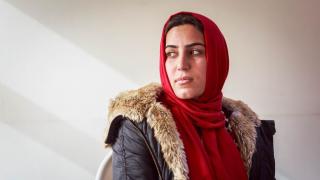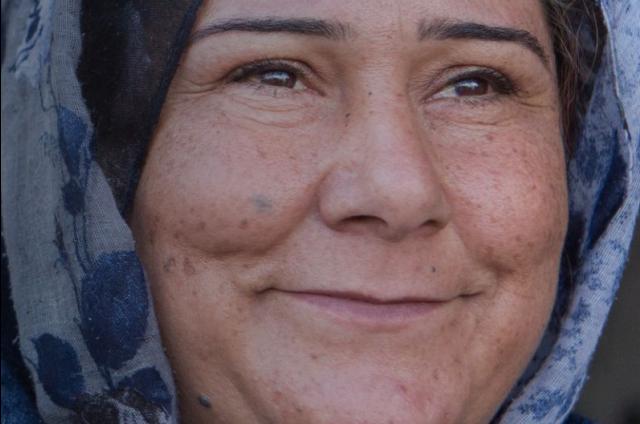The Stories Behind the Statistics
The Stories Behind the Statistics
Behind every number is a human being - with hopes, dreams and fears. This World Refugee Week, learn and share the stories of three brave women.
When you think about the word ‘refugee,’ what is the first thing that comes to mind?
Is it overloaded boats crossing choppy seas? Tattered tents under a scorching sun? Headlines announcing controversial new policies? Or is it other words like ‘crisis’ and ‘problem’?
We often hear faceless statistics that seem staggering and overwhelming. There are now more than 117 million – a record number – forcibly displaced people worldwide (source: UNHCR). But what does this mean in real terms?
At Women for Women International, we are guided by two guiding lights: to raise funds for women survivors of war and to elevate their voices, which are often overlooked and forgotten. We do this through the power of storytelling. Because a story is something everyone can understand – and it serves as a reminder that behind every statistic is a human being.
Here are three stories behind the statistics.
73% of refugees come from just five countries
Afghan and Syrian refugees account for the largest refugee populations in the world with 6.4 million each, followed by Venezuela (6.1 million), Ukraine (6.0 million) and South Sudan (2.3 million). Source: UNHCR
Shireen's Story
"I can defend them and support their rights…they have rights in this life."
Shireen and her family left Syria in 2013 to escape the fighting. They now live in the Kurdistan Region of Iraq. Unable to find work as a refugee, Shireen desperately wanted to learn a new skill that could help her provide for her family. Shireen learned how to sew, but she gained more than the ability to make clothes: she learned about her worth and value as a woman.
Our Stronger Women, Stronger Nations programme helped Shireen understand her value and equipped her to pass on that knowledge to her daughters. Watch her story.
69% of refugees are in countries bordering their homelands
More than two in three refugees are hosted by countries neighbouring their countries of origin. These include some of the world’s poorest and least developed countries. Source: UNHCR
Kateryna’s Story
"At this difficult time our women are confused, many do not know how to live on. The war destroyed dreams and plans. Many women are in a state of paralysis."
Kateryna Shukh is a Ukrainian refugee who fled following the Russian invasion in February 2022. She has since been living in Poland, where she runs Bereginia – Mariupol’s Women Association, one of our Conflict Response Fund partners. Trained as a psychologist, Kateryna supports women in gaining skills that can help them access the job market in their adopted home while processing the trauma of war.
Through her important work, she creates safe spaces for women and their families to come together to grieve and grow into the next chapters of their lives – together.
63.3 million people are internally displaced worldwide
Even if they have not crossed a border, internally displaced people (IDPs) have similar protection and humanitarian needs as refugees. An estimated 9.1 million people were displaced within Sudan, the largest internally displaced population ever reported. This was followed by Syria (7.2 million), and the Democratic Republic of the Congo (6.7 million). Source: UNHCR

Fryal's story
"My cousin asked me if I wanted to get married, because I was of the age to do it… I had a lot of pressure from my family."
Fryal is a 26-year-old Yezidi woman who came to live at Khanke camp for IDPs after escaping the violence of ISIS. It was supposed to be temporary, but the overcrowded tent, which she shared with her parents and ten siblings went on to become her home for more than five years.
Fryal’s parents arrived at the camp during the summer of 2014 with barely any possessions, no source of income, and eleven children to feed. They were plunged into a precarious existence. As the eldest daughter, 15-year-old Fryal encountered yet another obstacle to the future she had dreamed of: pressure to marry young. She resisted, and eventually, her parents backed down. Fryal has been helping to provide and care for her younger siblings while still dreaming of becoming a school teacher. But many other girls in her situation are wives and mothers by 15.
The story doesn't end here - take the next step
You can help to make sure women's stories are heard
The statistics can be overwhelming, but each number represents a person with a story, a struggle and a hope for the future. At Women for Women International, we believe in the power of these stories to connect, inspire and drive change. By sharing the real experiences behind the numbers, we can better understand the human impact of the refugee crisis and work together to create a world where every woman can thrive.
Follow us at @womenforwomenuk and sign up to our mailing list to learn more about ways you can support today.

